Best electric bikes for commuting: Get a boost on your ride to work
Our pick of the best e-bikes for commuting and a guide to choosing
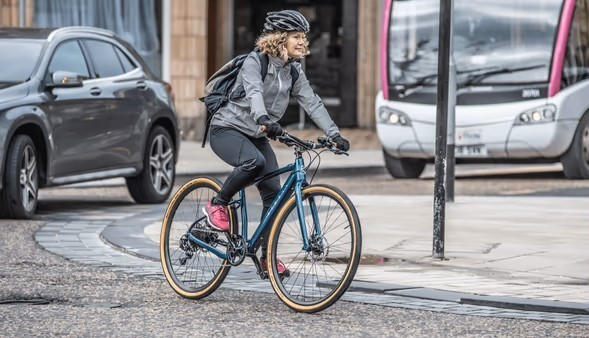
The best electric bikes for commuting help you get to and from work faster and with less effort. That means that you'll arrive less hot and also get a boost pulling away from traffic lights and other stops on your ride.
You'll become fitter and your commute may well take less time than by car or public transport, as you'll probably find quicker routes that you can only take by bike.
It's likely to be cheaper too, once the up-front cost of the electric bike has been discounted. For UK riders, the Cycle to Work scheme extends to electric bikes and makes buying the bike and equipment you need tax-efficient.
Depending on how far you're planning to ride, your needs will differ. Our pick of the best electric bikes for commuting below covers everything from a folding bike for something like a short hop to and from the station, to drop bar bikes for a longer commute that maybe includes some off-road riding.
Cyclingnews has a huge amount of advice on electric bikes if you want to know more.
Our guide to the best electric bikes gives you a more comprehensive range of options, while our pick of the best folding electric bikes offers options that make a compact package for storage or to carry on public transport.
If you've got a budget in mind, we have guides to the best electric bikes under £1,000/$1,000 and the best electric bikes under $2,000/£2,000. You can even convert a non-electric bike to an e-bike with the best electric bike conversion kits.
Alternatively, scroll down for our pick of the best electric bikes for commuting, or head to the bottom for a guide on how to choose and an explainer of the laws on electric bikes worldwide.
This guide was last updated in May 2025, when the products were checked for availability and the How to Choose section was added.
Best electric bikes for commuting: quick list
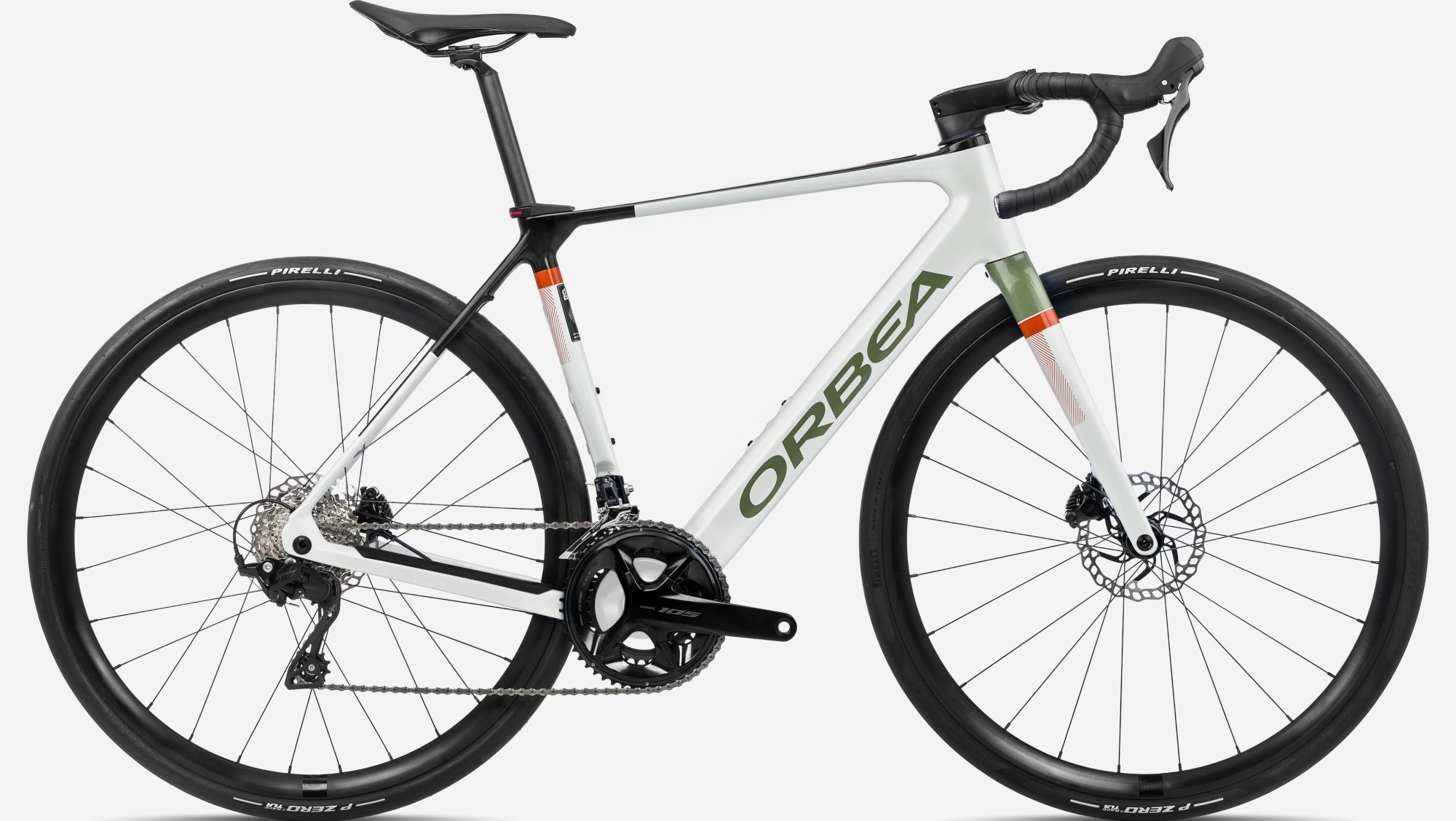
Orbea's stealth e-bike integrates the battery and motor. It looks like a regular road bike if you want to keep things subtle.
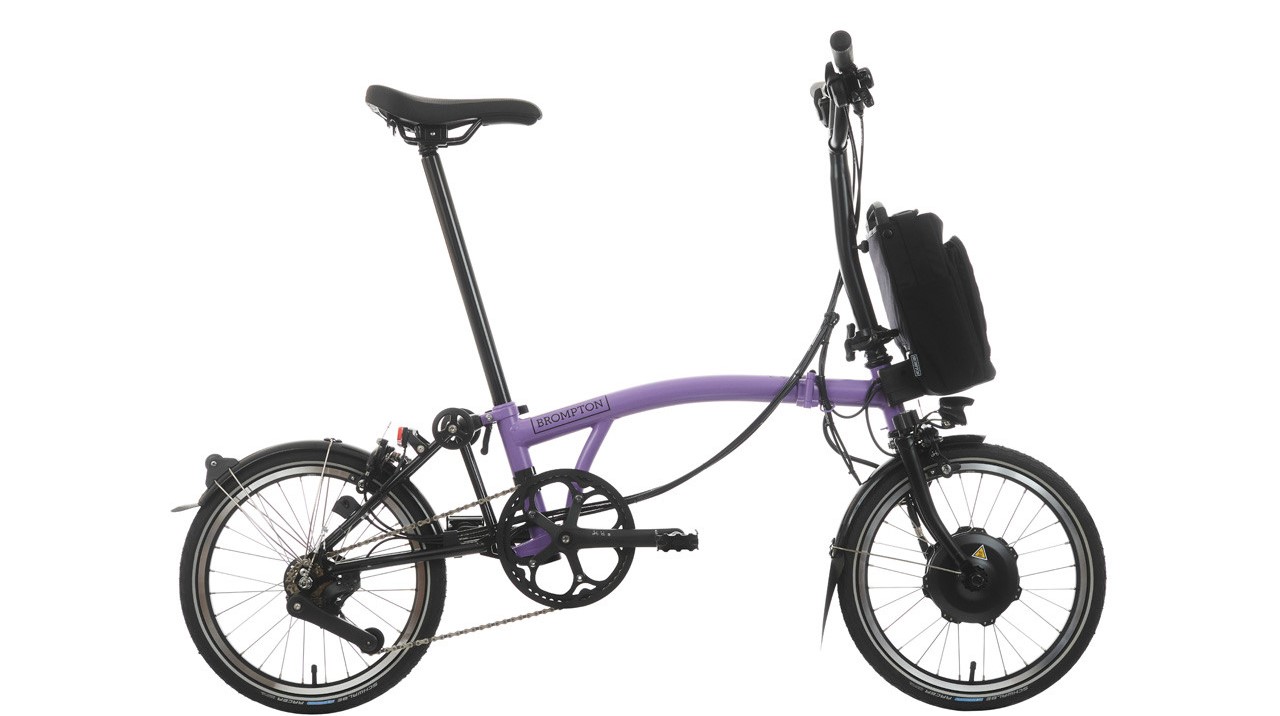
The Brompton's battery can be carried as a backpack, so it doesn't interfere with Brompton's quick, compact fold.
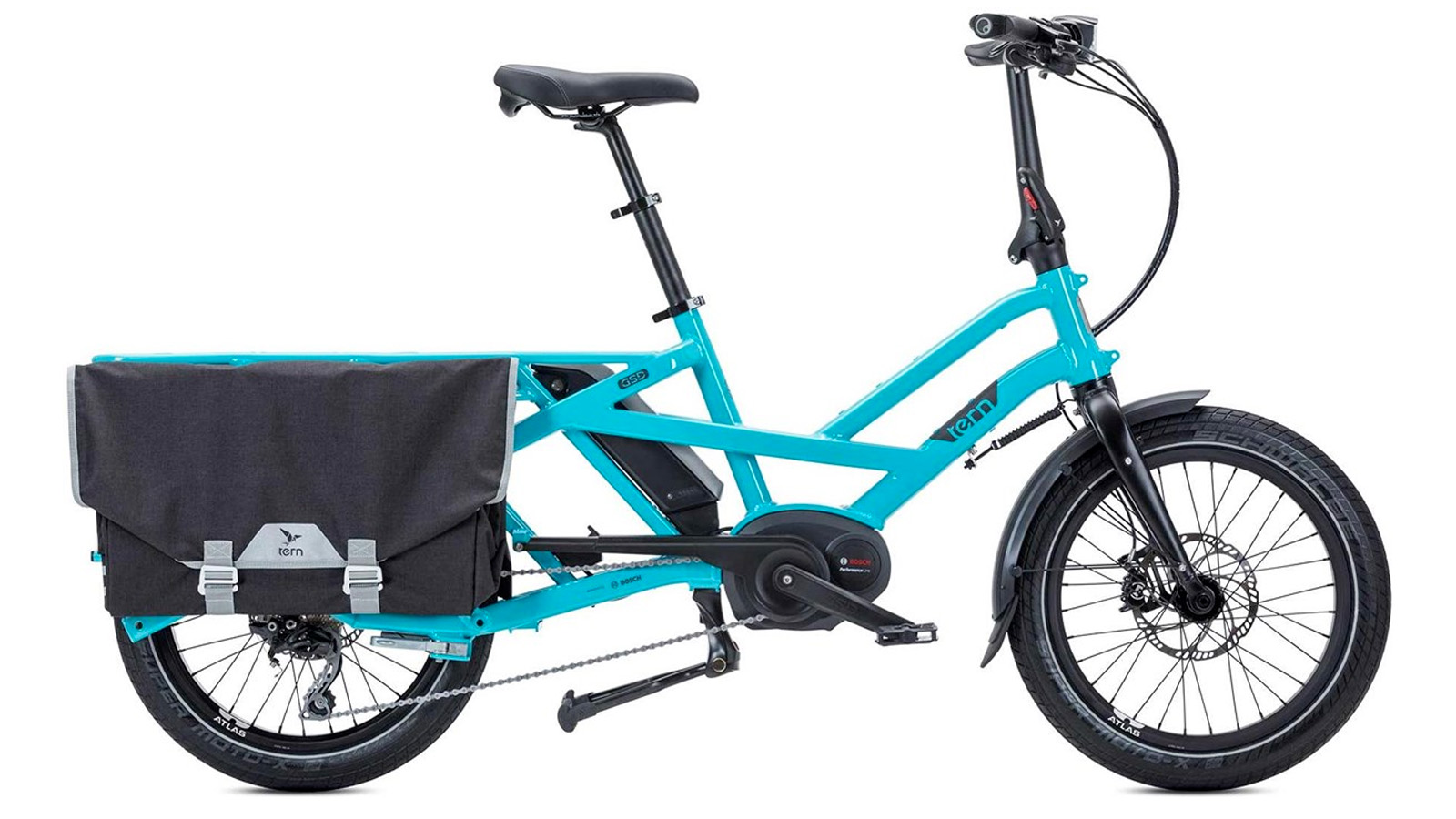
If you need to carry heavier loads or passengers, the Tern GSD can be kitted out with a range of accessories.
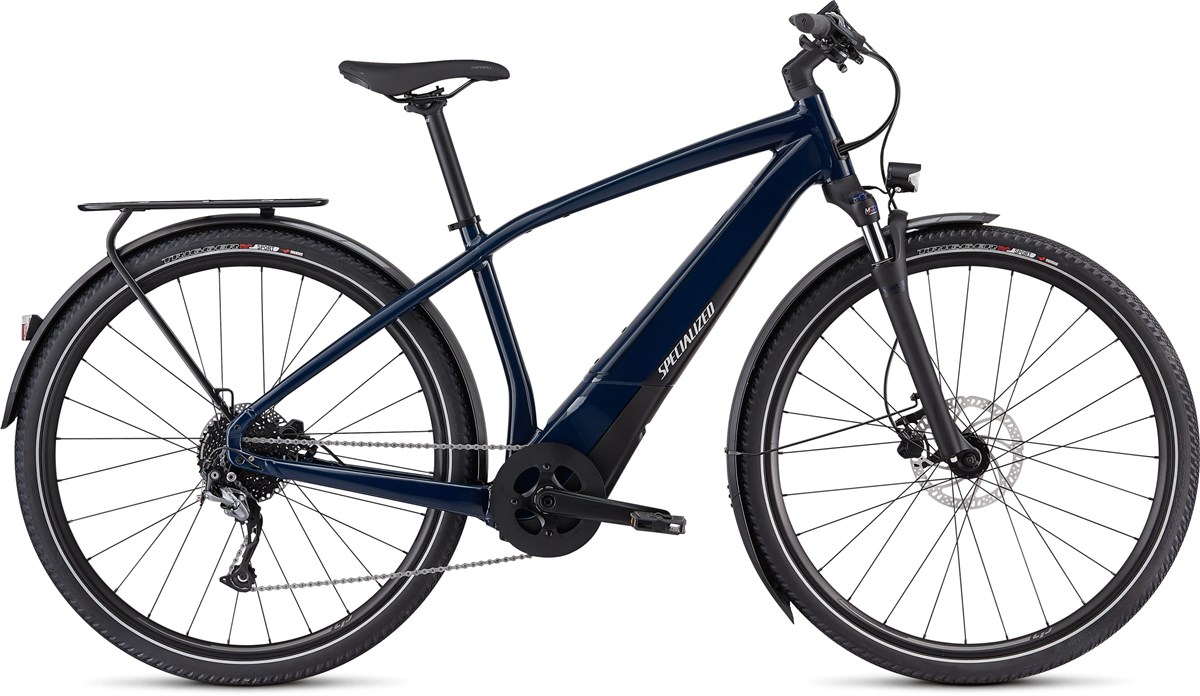
The Turbo Vado has a high capacity battery, wide tyres and a front shock to smooth out rough roads.
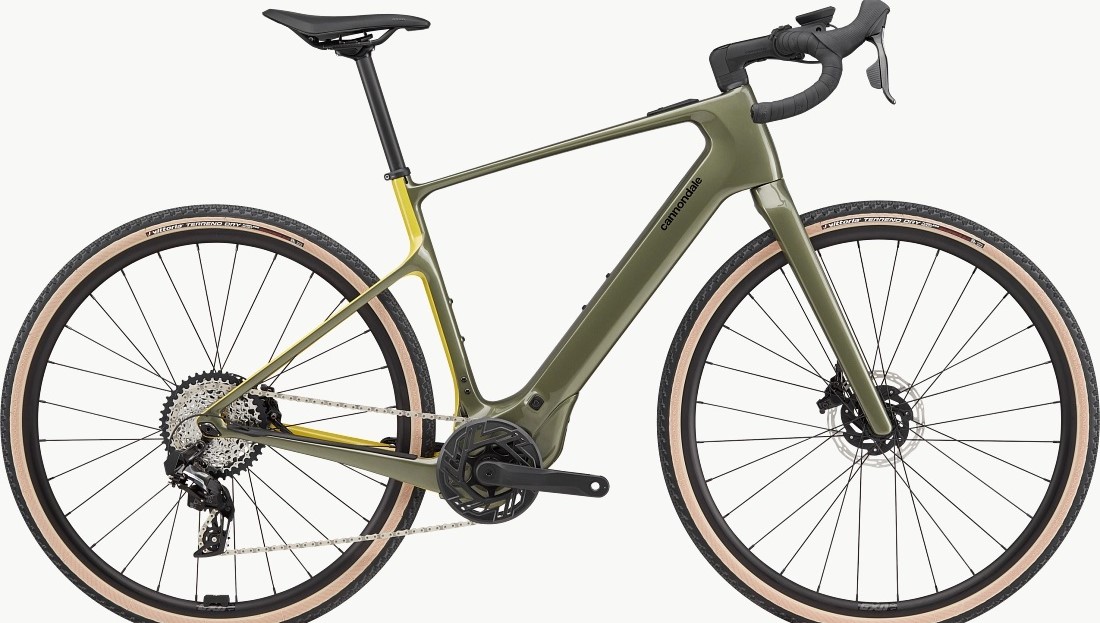
Cannondale's versatile e-bike can be fitted with mudguards and a rack for all-weather, all-terrain commuting.
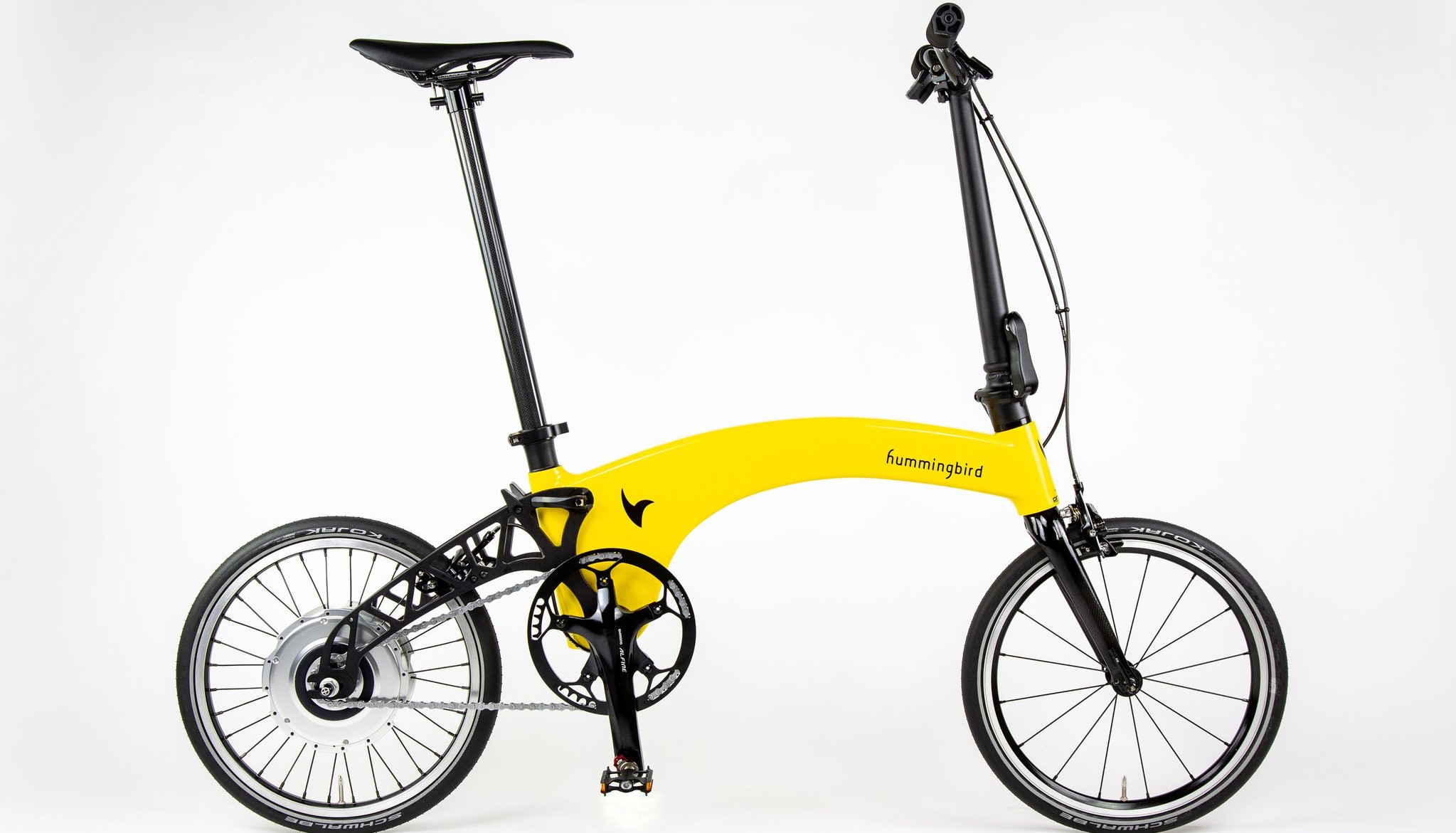
The Prodrive Electric bike weighs just over 10kg, making it a high tech lightweight folding commuter.
Best electric bikes for commuting
You can trust Cyclingnews
Here's our pick of the best e-bikes for commuting, whatever your ride style. All of the bikes below were available when we last reviewed this guide in April 2025.
Best for speedy commutes
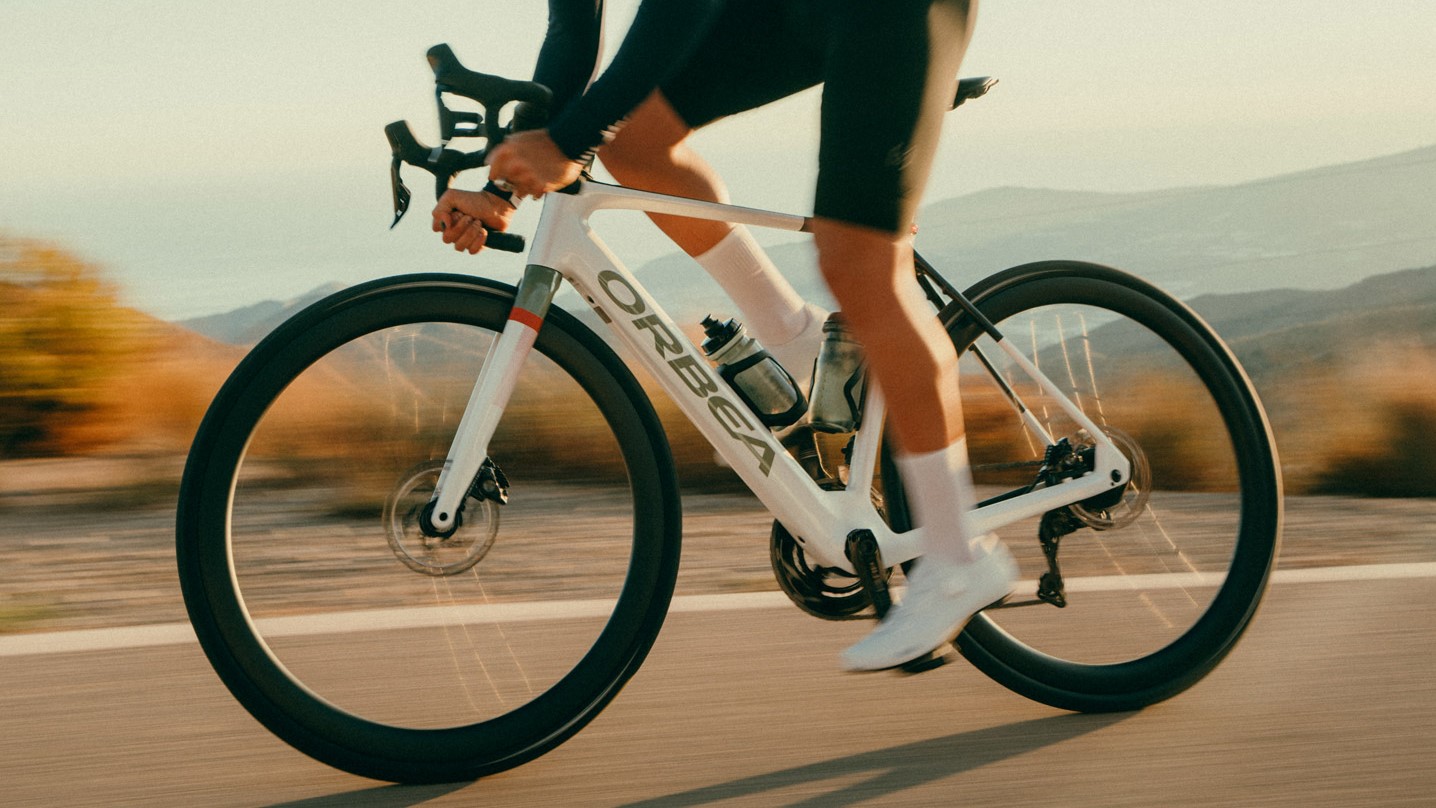
1. Orbea Gain M30
Specifications
Reasons to buy
Reasons to avoid
✅You want subtle electric integration: The in-frame battery and rear hub motor make for sleek looks
✅ You want a light e-bike: The Gain is among the lightest e-bikes available at around 13kg
❌ You want robust: Commutes can be hard on a bike, and the Gain may be a little delicate for city streets
❌ You want off-bike charging: You'll need a power outlet close to where you store the bike to recharge the battery
The Orbea Gain has such subtle integration of the battery and motor that, at first glance, you’d be hard-pressed to know it was an e-bike. It has an attractive, lightweight carbon frame and fork with a 12-speed Shimano 105 drivetrain, which should see you over any terrain. Well-disguised within that frame is a 353Wh battery, which should be plenty to get you to work and back.
If, however, you’d like more range, you can simply attach the external water-bottle-style battery, and that’ll boost the battery capacity up to 538Wh. Pedalling assistance is provided by a rear hub motor, which works in a concept Orbea is calling Enough Power and Enough Energy. The idea is that the bike intuitively offers enough power to keep you pedalling smoothly and efficiently to enhance your ride, rather than overwhelming you with big surges in power.
The bike comes with an app that allows you to change the bike’s functionality, including how power is applied, as well as tracking your rides. The mode button on the top tube has coloured LEDs that show you how much battery is remaining and which power mode you are in. There's now an additional bar-mounted controller/computer which gives you more info and which sits on an out-front mount with a built-in LED light.
As a full-size e-bike, the Gain isn't going to be easy to take on public transport, though, unlike a small wheeled folder like the Brompton Electric.
Best for public transport
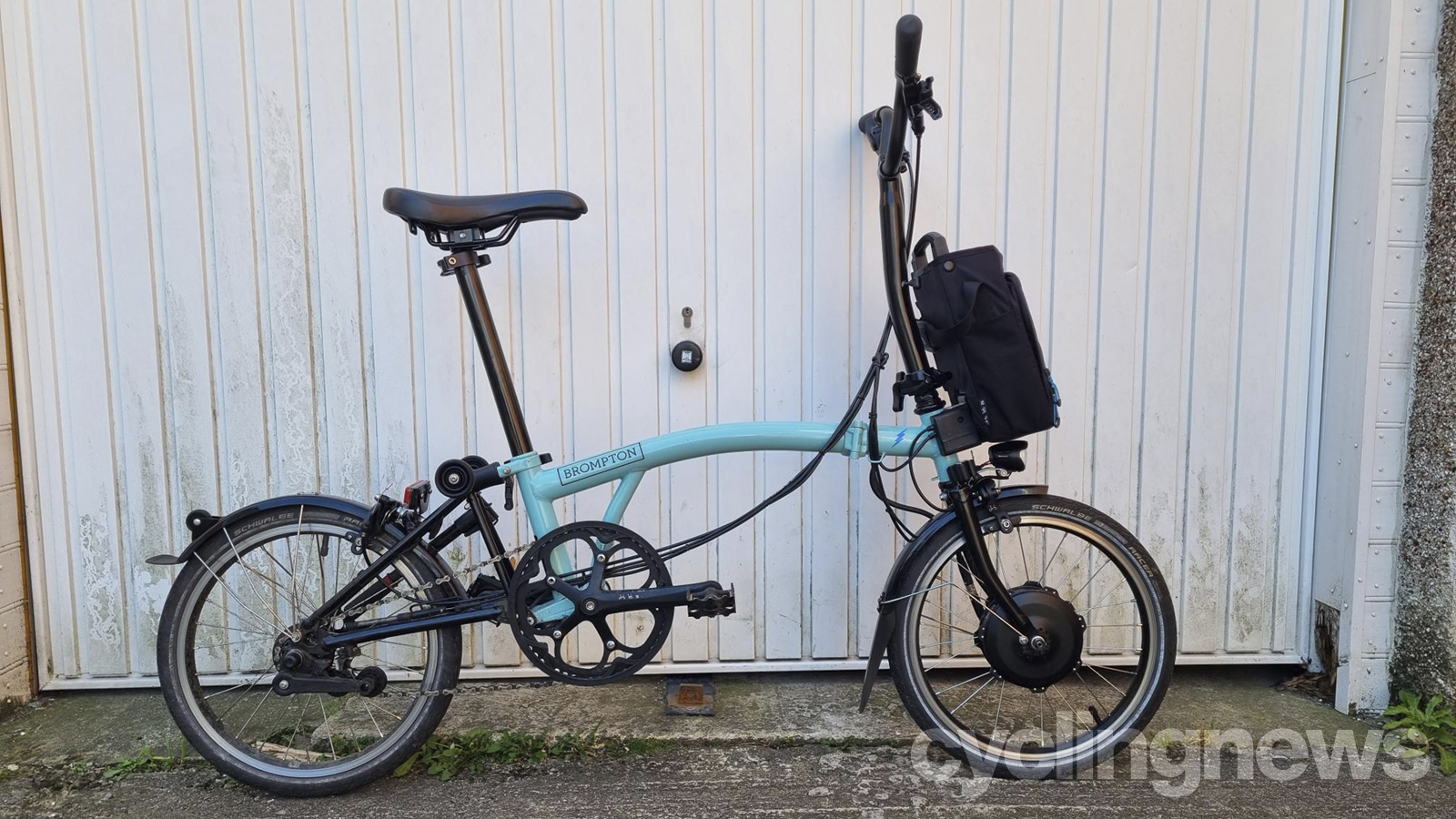
Specifications
Reasons to buy
Reasons to avoid
✅You want to use public transport: A folder is much easier to carry and less likely to be banned at peak hours
✅ You want a compact fold: Brompton's fold is as small as they get and fast too
❌ You want easier carrying: The separate battery backpack may prove awkward
❌ You want lower weight: The C Line is quite hefty, but the Brompton Electric P Line and the Prodrive e-bike (see below) are lighter
If you’ve ever been on the market for a commuter bike, you will have almost certainly cast your eyes upon a Brompton. The British company has sustained a great reputation built on ingenuity and quality for so long that you know you’ll be riding a high-quality machine.
If you need a bike that packs up into a small space, on a train or in the office, for example, a Brompton is likely the best electric commuter bike for you. The C Line Electric bike comes with front and rear lights fitted, as well as mudguards, and the 12-speed gears give you loads of range. Helped by the motor, you'll get to work easily, however hilly your city is.
The company has fitted a 250W motor to the bike, with a large enough 300Wh battery. The battery sits in a pack that conveniently unclips from the front of the bike and can be carried over your shoulder to your office or home to be charged. A full charge should be achieved within four hours. The quoted range for the battery is up to 70km if you have it on its most energy-efficient setting. There is an LED indicator on the top of the bag which shows you how much battery you have remaining, which power mode you are in, and what setting your lights are on.
The bag-plus-bike set-up does make carrying the bike that bit more difficult, though, although it does make charging a lot easier than an integrated battery like that on the Orbea Gain and lowers the weight of the bike when you need to carry it.
There's a P Line Brompton Electric available as well as the classic C Line Electric. Lighter components and fewer gears drop the weight quoted by Brompton from the C Line's 17.4kg as low as 15.6kg.
You can read more in our full review of the Brompton C-Line Electric bike.
Best for versatility
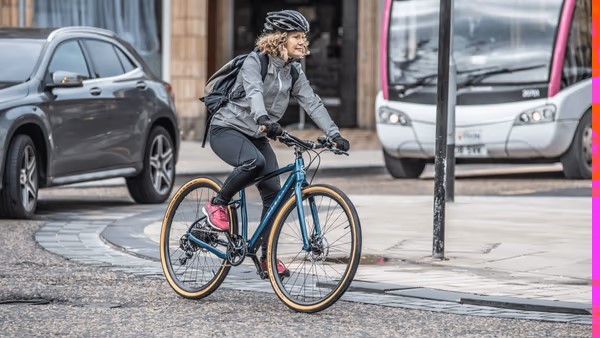
3. Ribble Hybrid Al e, Fully Loaded Edition
Specifications
Reasons to buy
Reasons to avoid
✅You want a fully specced package: With lights, mudguards and a rack, the Ribble is ready to roll
✅ You want a good value commuter: Ribble offers a lot of bike for your money
❌ You want off-bike charging: The integrated battery, as with the Orbea, can't be removed to charge
❌ You want easier assist level selection: The top tube controller is not very intuitive to use
Ribble is at the forefront of value-for-money, high-specification, well-integrated e-road bikes. Many of the hallmarks of this capability are evident in this hybrid bike, which should handle both your commute and leisure rides with ease.
The basis of the bike is a strikingly good-looking lightweight aluminium frame within which there is a battery so well hidden that you barely notice it’s there. There are step-through and trail options as well as the standard top tube model.
A subtle button and LED light on the top tube allow you to see how much battery is left and let you choose how much assistance you want. If you want even more control over the settings, you can change the settings in Ribble’s app.
The bike is impressively kitted out too, with a Mavic wheelset, a rear pannier rack, a bell, front and rear lights and full-length mudguards. As with all bikes where you can’t remove the battery, including the Orbea, you will have to take this bike within touching distance of mains power to charge it up.
Best for passengers
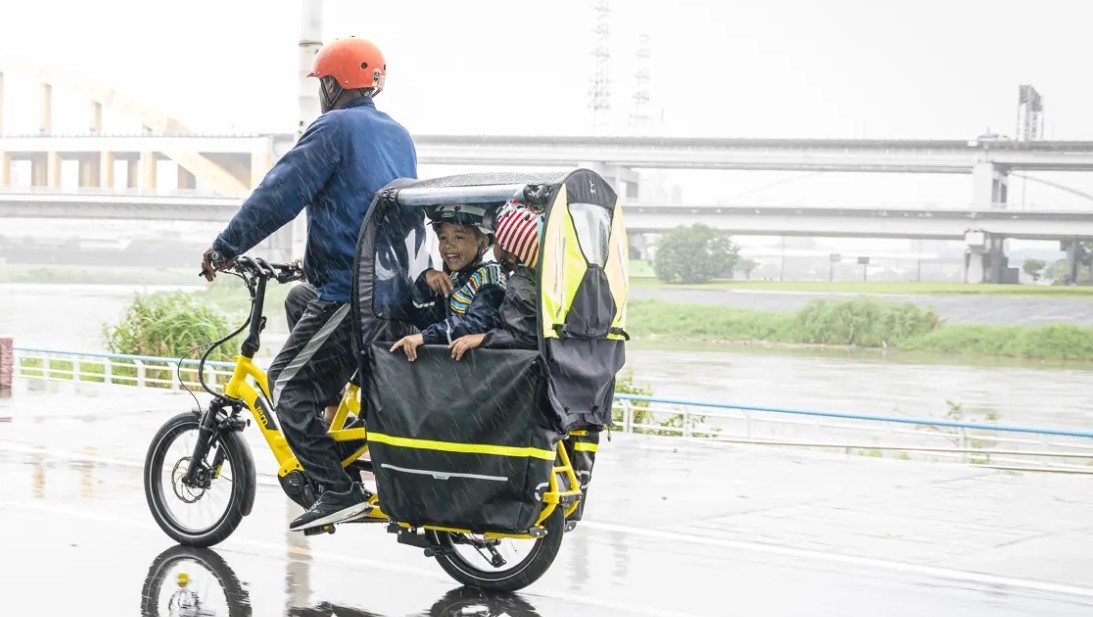
4. Tern GSD S10
Specifications
Reasons to buy
Reasons to avoid
✅You want to carry kids, dogs or cargo: Tern's bike is a great option if you want to carry stuff
✅ You want large battery capacity: The two batteries offer a huge range, even if you're loaded up
❌ You want a lighter option: You'll not want to move the 27kg weight far off-bike
❌ You want a lower price: The Tern is a pricey option if you don't need the carrying grunt
While Tern claims the GSD isn’t intended to be a car killer, it may well be just that. The company is best known for its folding bikes, and while the GSD isn’t a fully foldable bike, the seat post and handlebars do collapse to make storage of this bike a little more compact. The reason it can’t fold down much smaller is that this is not your average folding bike. This is a heavy-duty cargo bike, capable of carrying up to 200kg, be that luggage, or, should you attach the right seat, two passengers on the back.
The bike employs a dual battery system, which are 400Wh and 500Wh in size. Should you have both of them attached, you’ll have a whopping 900Wh of capacity. This will be enough to assist your cycling for between 110 and 250 km, depending on which of the 4 modes you have it in. The 10-speed Shimano hub gears and impressive 85Nm of torque mean you’ll be able to get up any hill, even when fully laden. It comes complete with large, grippy tyres, a rear luggage mount, a kickstand, front and rear lights, and mudguards.
It's a heavy-duty cargo carrying option, but not as practical as a folder like the Brompton C Line Electric or a bike with less luggage capacity like the Ribble if you have less need for carrying capacity.
Best for the long commute
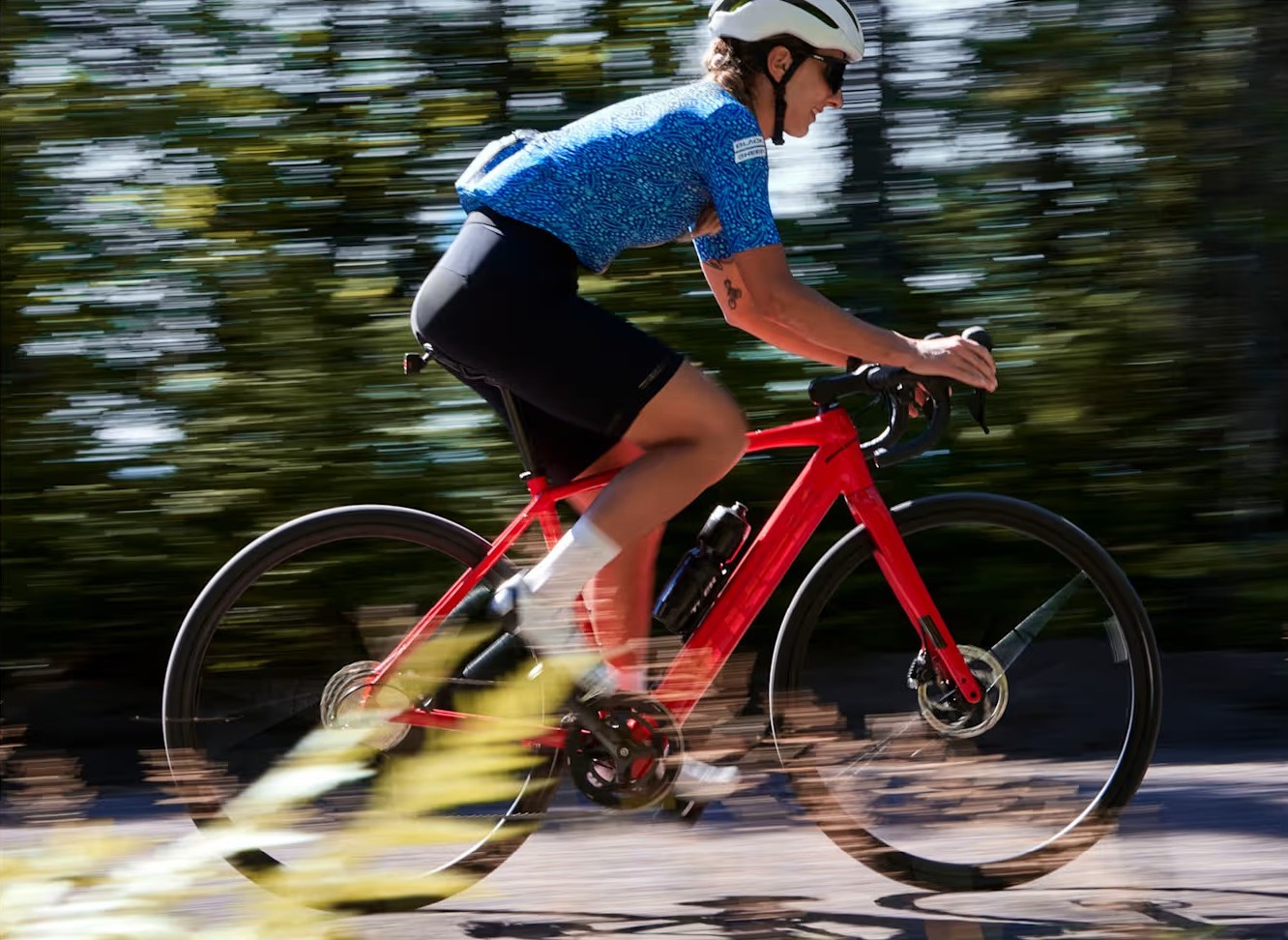
5. Trek Domane+ AL
Specifications
Reasons to buy
Reasons to avoid
✅You want road bike style: The Domane+ has the looks of a sleek road bike
✅ You want extra range: You can add a range extender to push the range out to a claimed 177km
❌ You want a higher spec motor: The HyDrive hub motor isn't as flashy as the TQ motor in the carbon SLR models
❌ You want lower weight: The carbon Domane+ lowers the weight - but at a price
Built for comfort and speedy commutes, the Trek Domane+ AL electric bike gets wide 32mm tyres, which help add comfort and grip. You can either fit mudguards or even wider rubber for rougher routes into the office. Trek's endurance geometry makes the Domane+ LT a comfortable ride for the long-haul commute.
The HyDrive rear hub motor is powered by an internal 250Wh battery, but you can add a down tube range extender, which doubles this, giving you a 177km claimed range on a full charge. The Trek Central app allows you to keep track of your rides and fine-tune the motor's output to meet your requirements.
Alongside the Domane+ AL, which is speed limited at 25kph (or 20mph in the US), Trek sells the carbon Domane+ SLR, rated to 28mph for US riders, although it's significantly more expensive.
Best for rough roads
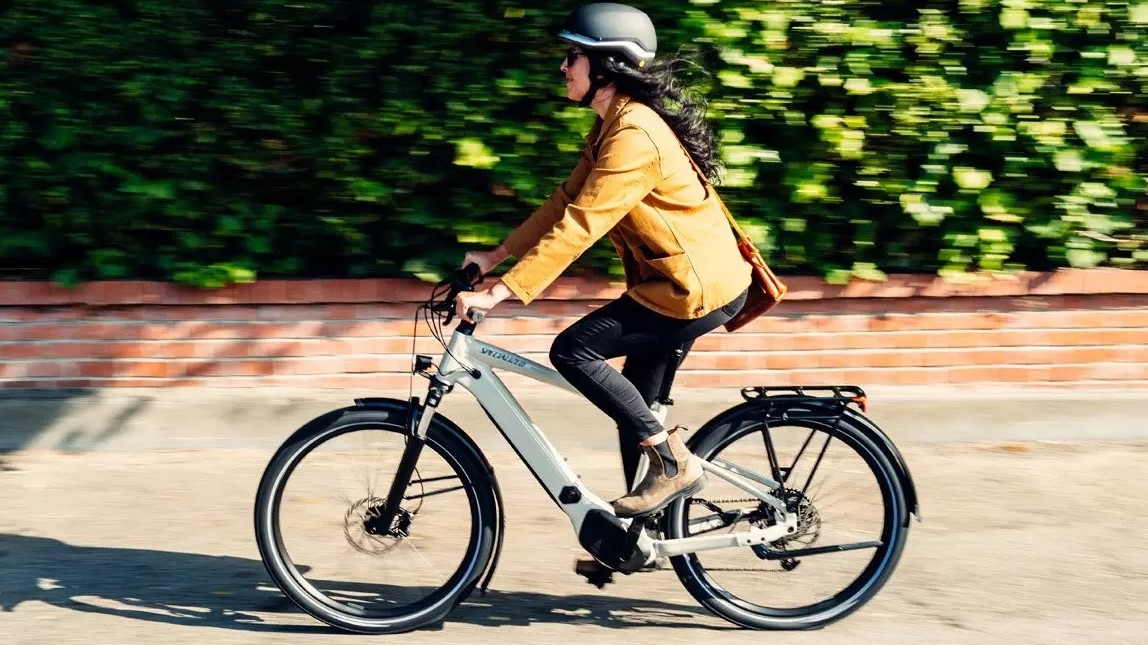
6. Specialized Turbo Vado 4.0
Specifications
Reasons to buy
Reasons to avoid
✅You want a full spec commuter: The Turbo Vado's mudguards, lights and rack make it ready to roll
✅ You want suspension: There's a suspension fork and seatpost for a plush ride
❌ You want a livelier ride: The Turbo Vado's weight and ride position favour steady rather than nippy performance
❌ You want greater portability: The Turbo Vado is a heavy e-bike; Specialised also sells the lower weight Turbo Vado SL
You might initially mistake this bike for a mountain bike, rather than one cut out for commuting. In reality, the 2.3-inch tyres and 80 mm travel suspension fork are perfect not for the trails but for smoothing out bumps and road buzz on your commute. If you live in slightly more remote areas, the bike should also deal with gravel or hard-pack dirt trails with ease.
The bike comes with a large 710 Wh battery, which powers a trusty Specialized motor and a SRAM NX groupset with a wide enough range to get you over any terrain. To keep you safe, it also comes with hydraulic disc brakes, which will provide dependable braking in any weather conditions. It comes with front and rear mudguards, and a rear pannier rack to carry any work stuff from A to B without having to wear a backpack. It's available as a step-through as well as the version with a top tube shown above.
You get extra comfort, range and a more powerful motor, but the Turbo Vado isn't as sprightly as the Orbea Gain or the Cannondale Synapse.
Best for the all roads commuter
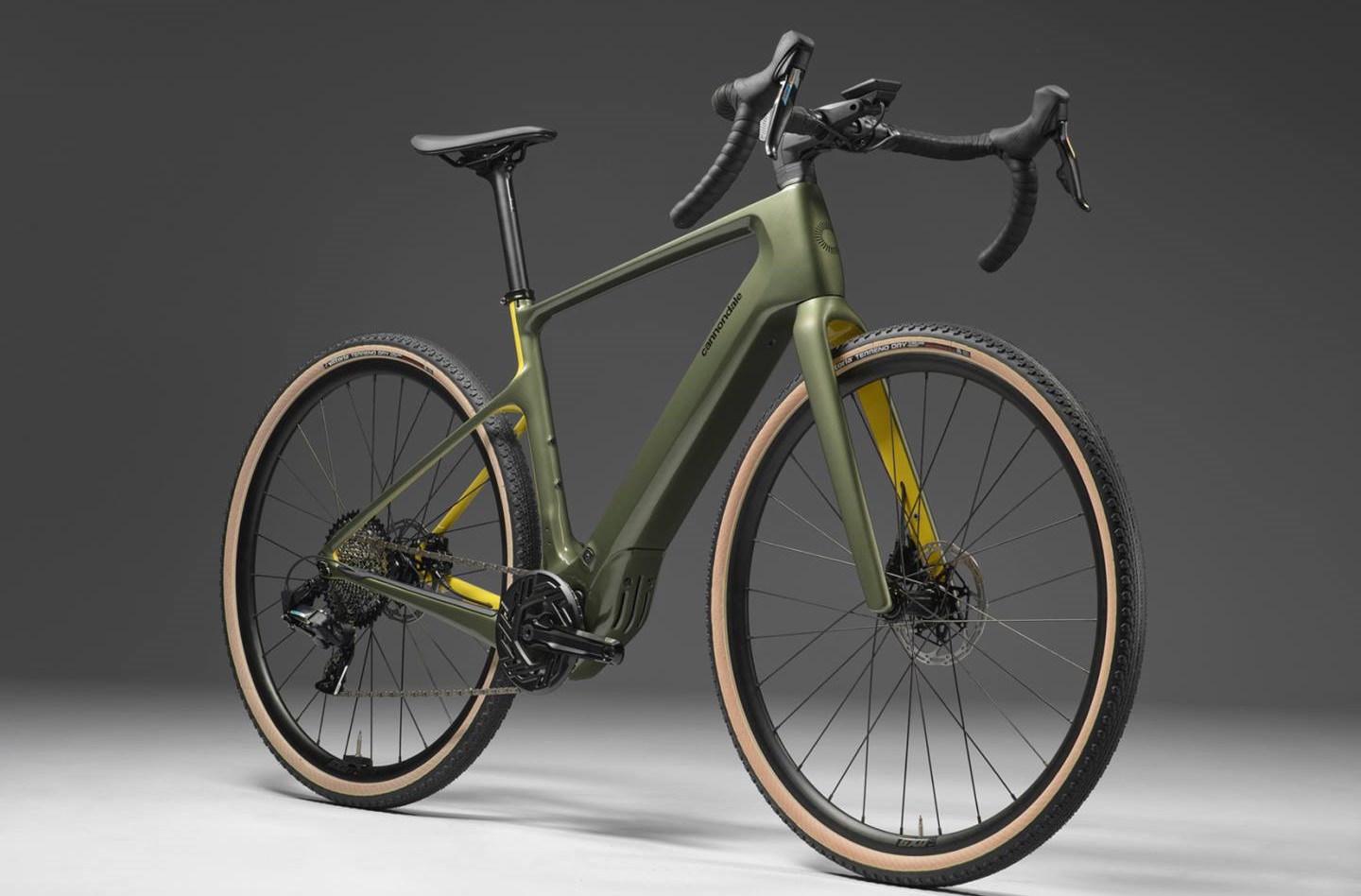
7. Cannondale Synapse Neo Allroad
Specifications
Reasons to buy
Reasons to avoid
✅You want to head off-road: The wide tyres and powerful motor mean your commute doesn't have to stick to tarmac
✅ You want good range: The 400Wh battery should keep you rolling
❌ You want lower weight: The Synapse Neo is heavier than some other drop bar e-bikes
❌ You want a removable battery: This is another e-bike that needs on-bike charging
If you want to speed up your e-bike commute, a drop bar racer will give you a more aerodynamic ride position that should be faster than a flat bar hybrid like the Ribble or the Specialized.
The Cannondale Synapse Neo Allroad comes with a powerful Bosch motor that's mid-mounted for stability and a high capacity battery for plenty of range.
There's a 12-speed SRAM electronic drivetrain with plenty of gear range, which, along with the motor, should make hills a breeze on your ride into town. The hydraulic disc brakes mean assured stopping, and the 40mm wide Vittoria tyres should provide comfort over broken roads or even if your commute takes in a towpath or gravel track.
There's plenty of range from the large 400Wh battery, and you can add a range extender for an extra 250Wh, while the frame is mudguard and rear rack compatible.
Best featherweight folder
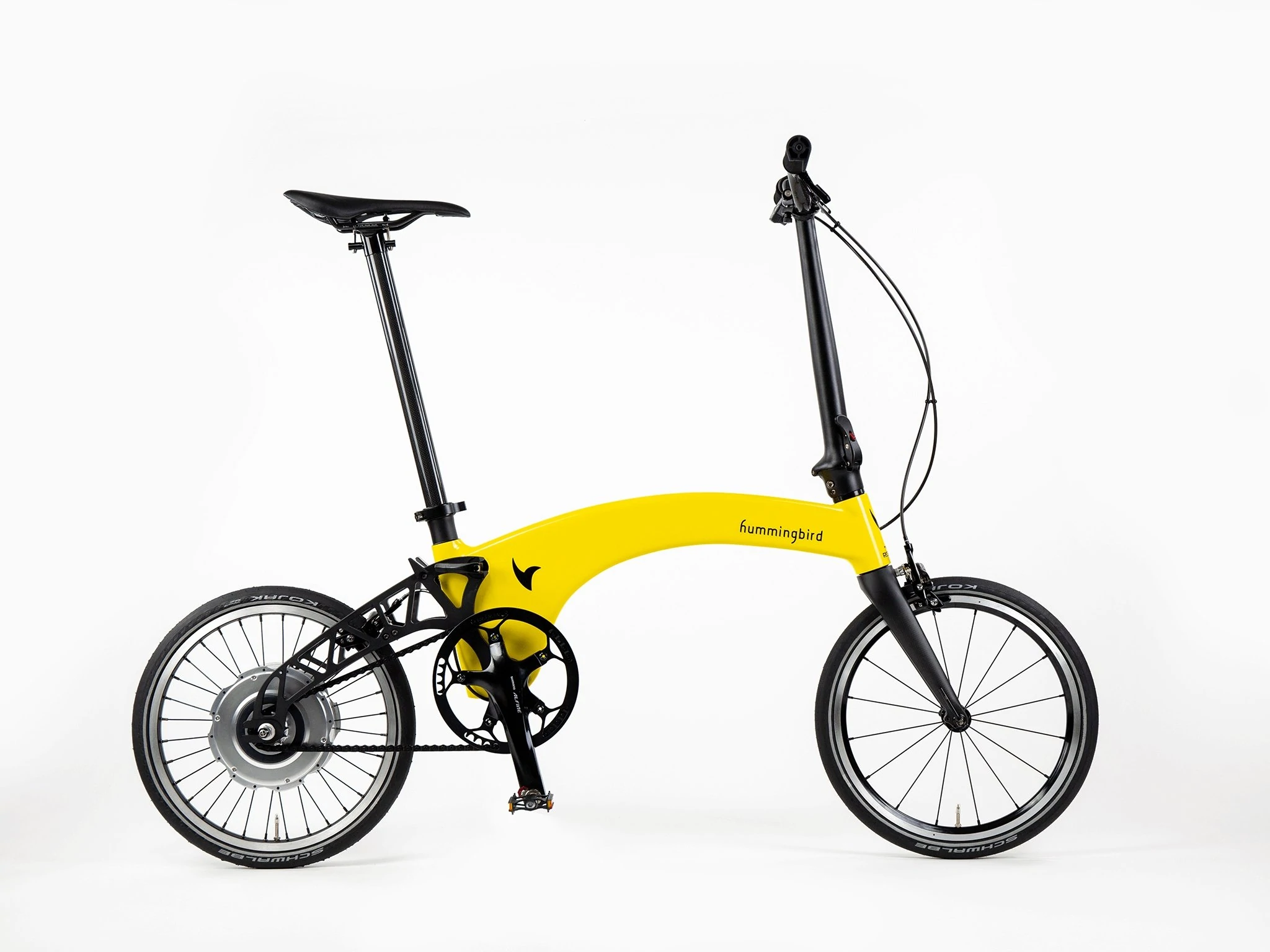
8. Prodrive Electric
Specifications
Reasons to buy
Reasons to avoid
✅You want a low weight folder: The Prodrive is as light as it gets for a folding bike
✅ You want an e-bike for flatter commutes: The single speed may make hillier cities hard
❌ You want longer range: The low weight means a smaller battery and hence shorter range
❌ You want a smaller fold: The Brompton Electric folds to a more compact size for storage and public transport
Prodrive has engineered its folding electric bike to be as light as possible. A carbon fibre main frame paired to a cantilevered truss rear section and lightweight components brings the overall weight down to a claimed 10.3kg.
The Prodrive bike doesn't fold down quite as small as a Brompton Electric, it's only singlespeed so might not work for hillier cities and the range is quite limited at around 50km, but Prodrive has upped the torque from the 250 watt motor so there's more pulling power to help get you moving. All that engineering means that the Prodrive bike is expensive, though.
Best electric bike for commuting: how to choose
There's a lot to think about when selecting an electric bike for your commute, so we've provided a breakdown of the key points here. There's more information in our guide to the best electric bikes as well.
- What's your commute like? If you're riding up hills you'll want gears; if it's flat consider a single-speed e-bike
- How long is it? For all but the most epic commutes, almost any e-bike should have enough range for a round trip, but if you need to make multiple trips between charges, you might need a larger battery. Cold weather can affect the available range too.
- Do you need to take public transport? If so, a folder may be a better choice than a non-folding e-bike for its easier transport and avoidance of any peak time travel restrictions.
- Do you need to carry your e-bike? If you need to take your bike up stairs at either end of your commute, you'll appreciate a lower weight.
- How fast do you want to be? For US riders, there's a choice between motors that cut out at 20mph and 28mph. Elsewhere, it's 25km/h.
- How much do you want to pay? Higher-performance e-bikes can be expensive, so set a realistically affordable budget.
- How many add-ons will you need? Factor in the price of mudguards, a rack and lights if they don't come with the bike or look for a model with these ready-fitted.
Electric bikes for commuting: Frequently asked questions
Why is an electric bike good for commuting?
An electric bike can make your commute a lot more comfortable. It can make stops and starts a lot easier, provide assistance on uphills and increase your overall average speed, while lowering the effort you need to put in, so you should arrive less hot and tired than on a non-electric bike. You may feel more comfortable riding a longer distance, too.
It's also likely to be a lot more enjoyable than a ride on public transport, and you can choose your own time to travel, while you're less prone to delays due to congestion than in a motor vehicle.
Many towns and cities now have dedicated cycling routes, so you may not need to compete with motorised traffic and might be able to skip queues and even get a jump at traffic lights due to cyclist priority signalling. There are also often quietway routes for cyclists that bypass main roads, take you away from traffic and may route you around bottlenecks.
On the flip side, most electric bikes are quite heavy, so moving them around at the beginning and end of a ride will be harder work than with a non-powered bike. If your commute involves public transport, it will be harder to get your electric bike on and off than with a non-powered bike and you may not be able to take a non-folding bike at peak times. The best folding electric bikes will help here.
You also need to make sure that you can keep your electric bike charged up so you don't run out of juice halfway home in the rain (although electric bikes are designed so that you can pedal them without assistance). That means having a handy power outlet close by where you park your bike, either at home or at work, or an e-bike with a removable battery. You might need a second charger at work too.
What material should my frame be made of?
The three most common frame materials you’ll come across when looking for a bike are aluminium, steel and carbon, although titanium might make an occasional appearance.
Carbon is most often used in the best road bikes and the best lightweight electric bikes because of its low weight and high stiffness. However, it can be quite fragile, and innocuous bumps could cause very expensive damage, so if you’re locking your bike up in communal locations, we recommend you stay away.
Most bikes and e-bikes you look at for commuting are likely to be made from aluminium, and for good reason. It’s fairly cheap, very durable and not as subject to corrosion.
You may find some electric bikes are made of steel. While it is tough and can take some bumps and bruises, it is relatively heavy and can be subject to rust.
What should I look for in an electric bike motor?
Most e-bike motors are power-limited to 250 watts, but they can provide varying amounts of torque, measured in Newton-metres (Nm). If your commute is flattish and you're fairly fit, a motor with around 40Nm to 50Nm torque is likely to be fine, but if you're riding somewhere more arduous or expect to be carrying a lot, then a motor with more torque will be better. Some go up to 80Nm or more, which is what an electric mountain bike puts out.
A mid-mounted motor is likely to keep your e-bike most stable, as it's low down and central on the bike. But a rear hub motor isn't likely to have a significant impact on handling, and, as your weight is over the rear wheel, grip isn't likely to be an issue.
Front hub motors are trickier, as there's less weight on the wheel and so less grip, and the extra weight can affect the bike's handling if it's not been carefully designed.
How much battery capacity do I need?
As with all technologies, it’s easy to look back at some original e-bikes and notice how bulky they looked. Batteries were bolted onto frames wherever there was space and were often of very low capacity. Fortunately, we’re beginning to see much higher capacity batteries and sleeker integration of both batteries and motors.
Typically, the smaller the physical size of the battery, the lower its capacity, and the fewer miles you’ll get out of it. For most people, this shouldn’t be an issue, with even small batteries having enough juice to get you to work, where you can charge up again or serving duty for multiple days of commuting.
Battery size is most often expressed in watt-hours (Wh), and the amount of assistance you’ll get from it depends on how much you ask of it. For example, a 300-watt-hour battery can provide 300 watts of assistance for one hour, or 100 watts of assistance for 3 hours.
A battery can weigh several kilograms and make up a significant proportion of an electric bike's weight. That's okay in a non-folding bike, although it can make moving the bike to a storage area at the end of a ride harder. It's more of an issue with a folding bike designed for portability, so a bike like the Brompton C Line Electric will often have a lower capacity battery to make it easier to carry.
How do I charge my electric bike?
Some bikes have removable battery packs, making them simple to unclip and charge, even if your bike is left outside or in a communal bike store. Others, typically those with more integration, require you to charge the battery while it is attached to your bike, meaning you’ll have to hook it up to the mains in your house, garage or at the office, so it’s worth checking to see how easy this might be for you.
You're either going to have to carry your charger with you or buy a second one if you need to charge the e-bike at both ends of your commute. Some electric bikes like the Orbea and the Trek can be fitted out with a range extender battery if you do need more range, but in reality most commutes are likely to be short enough for range not to be an issue even with the lowest battery capacity, unless you expect to go multiple days without recharging.
How many gears do I need?
As usual, the stock answer is "that depends". If you live somewhere flat, a single-speed electric bike may be enough for you. The extra power provided by the motor means that starting off will be a lot easier and faster than with a non-powered commuter bike.
At the other extreme, if your commute is hilly, you may need a full range of gearing, as found on the best commuter bikes, which don't include a motor. Again, the motor is a huge help here. Crank it up to maximum power output, and it may pull you up steep inclines; lower the assistance level once you've reached the top to conserve battery life and range.
What additional features should I look for?
For commuting duties, it's preferable to get the load you're carrying off your back: you'll be more comfortable and your centre of gravity will be lower. It may be easier to look around without a pack, too, although the best cycling backpacks will be designed to address these issues.
If you're planning to commute with your electric bike in all weathers, then look for mudguards or at least the option to fit mudguards to your bike. Likewise, winter commuting is likely to mean at least one journey in the dark. Built-in lights are handy and they'll often be run off the electric bike's battery, meaning that there's less to remember to keep charged up.
You can pick up a set of the best bike lights relatively inexpensively, though. It's a good idea to use lights even during the daytime to up your visibility, particularly in town.
Take a look at our commuter bike accessories checklist for a longer list of things you might need for your commute.
How do I maintain my electric bike?
Bikes, like cars or any other mechanical device, need to be maintained. If you’re not an experienced mechanic, most things are simple enough to learn how to do yourself, but spend a little bit of money and a bike shop will have you good to go in no time. But, the fewer complicated parts, and the better you care for your bike, the less chance there is of things going wrong.
The gears on your bike, including the derailleurs, cables and shifters, will require regular maintenance to keep them performing at their best. Some people are fortunate to live and work in flat areas and so they can get away with the simplicity and ease of a single-speed bike.
However, most of us live in areas with hills, and therefore, gears are a necessity. Internally geared hubs are a more robust, easier-to-maintain solution than derailleurs, but can be pricier and are usually heavier. You'll sometimes find a carbon fibre belt drive on bikes for commuting, which cuts down on maintenance over a chain-driven solution.
Keeping your brakes in working order is arguably the single most important thing when looking after your bike. Jumpy gears and a loud chain might ruin your enjoyment, but poorly functioning brakes could have much more dire consequences.
Classical brake systems, using a cable to join your lever and your brakes, have stuck around for so long because they’re simple and they work, but you do need to keep them properly maintained, regularly checking the cables for wear.
Higher-end bikes are often equipped with hydraulic disc brakes; not only do these work more effectively in poor weather conditions, but once set up they should require less maintenance too. Disc brakes are trickling down the bike price range and you might find them on quite inexpensive electric bikes.
What are the e-bike regulations where I live?
What classifies as an e-bike and what regulations apply to riding it vary by where you're located.
UK/EU
At present, most e-bikes in the UK fall under the EPAC (that’s the electrically assisted pedal cycle) amendment regulation mandate. This means bikes have to be moving before the motor can kick in, it can provide a maximum of 250 watts of constant power and has to stop aiding at 25 kph. You also have to be at least 14 years old to ride an e-bike.
So long as your bike meets these criteria (as all the ones in this article do), then you’ll have the same legal standing as regular bicycles and you’ll be allowed on roads and bike paths. If your bike assists you up to faster speeds it’ll be considered a two-wheel moped, and therefore you’ll require insurance, a certified helmet, and a valid driving licence.
Australia
In Australia e-bikes can assist you up to a maximum speed of 25 kph. The two legal systems in Australia are throttle-operated and pedal-assist. If you have a throttle-controlled bike it can provide up to 200 watts of power, whereas pedal-assist e-bikes can give you 250 watts of assistance. Anything above that is legally considered a motorbike and must therefore be licensed and insured.
USA
Given the structure of the American legal system, the rules governing the use of e-bikes are predictably more complicated than those in the UK and Australia. Let’s begin.
The laws governing the use of e-bikes vary from state to state, but these are often difficult to interpret. The all-encompassing, federal definition of an e-bike is “a two- or three-wheeled vehicle with fully operable pedals and an electric motor of less than 750 watts (1 h.p.), whose maximum speed on a paved level surface, when powered solely by such a motor while ridden by an operator who weighs 170 pounds, is less than 20 mph”.
As if that isn’t complicated enough, often state laws may override federal legislation. Some 33 states have statutes that define an e-bike in some way, while the rest lack any specific definition, and often chuck them in with other classes of vehicles. At present, 13 states are adhering to a three-tiered system proposed by The Bicycle Product Suppliers Association. While the motors on all classes of bikes can produce a maximum of 750 watts, they are tiered depending on their maximum assisted speed:
- Class 1: the motor provides assistance only when the rider is pedalling, and cuts out at 20 mph
- Class 2: the motor can contribute even if the rider is not pedalling, but cuts out at 20 mph
- Class 3: the motor provides assistance when the rider is pedalling but cuts out at 28 mph and must be equipped with a speedometer
While Class 1 and 2 e-bikes are allowed anywhere bikes are allowed, Class 3 e-bikes can only be ridden on roads and bike lanes, but not multi-use paths. In the states that regard e-bikes as vehicles, licensing and registration may be required to operate an e-bike.
Yes, this is a lot to get your head around, but thankfully the kind folk at People for Bikes have put together a state-by-state guide.
How we test
Here at Cyclingnews, our tech team has huge experience riding, maintaining and reviewing a wide range of bikes and electric bikes and other cycling equipment and clothing.
We'll put bikes through their paces on a variety of rides and different terrains, including commuting by bike and more challenging rides. We'll follow a structured process to assess a bike and arrive at an overall assessment, which we document in our reviews.
To learn more, head to our How We Test page.
The latest race content, interviews, features, reviews and expert buying guides, direct to your inbox!
Paul has been on two wheels since he was in his teens and he's spent much of the time since writing about bikes and the associated tech. He's a road cyclist at heart but his adventurous curiosity means Paul has been riding gravel since well before it was cool, adapting his cyclo-cross bike to ride all-day off-road epics and putting road kit to the ultimate test along the way. Paul has contributed to Cyclingnews' tech coverage for a few years, helping to maintain the freshness of our buying guides and deals content, as well as writing a number of our voucher code pages.
